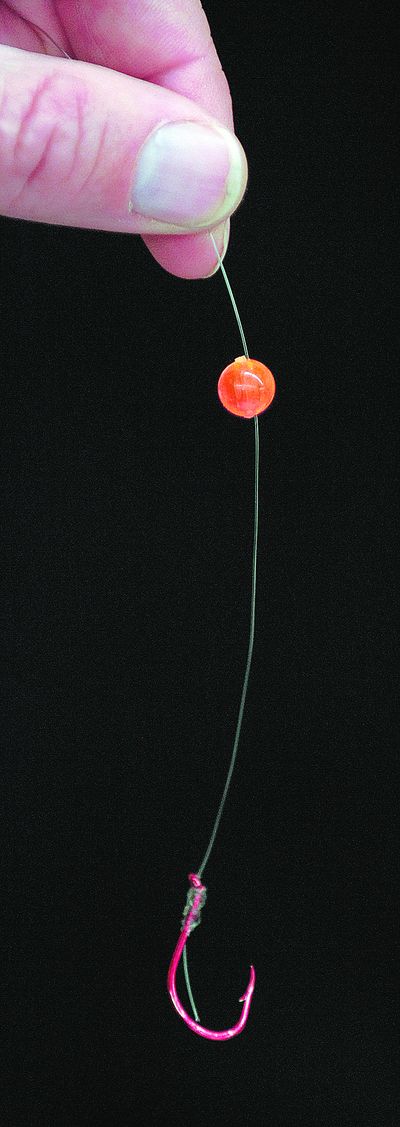Easy does it, steelheader says
Easy does it, steelheader says

Steelhead fishing is best when it’s simple, says Orofino, Idaho-area fishing guide Kyle Jones.
Like a growing number of anglers, Jones, who also works at Camp, Cabin and Home in Lewiston, has pared his fishing gear down to a few basic and cheap materials. All he needs is a hook with an egg loop, a bit of yarn and some scent.
“It’s about as simple as possible,” he said. “Just a single hook with an egg loop.”
He quickly demonstrates by tying a hook with an egg loop and sticking a fingertip-sized piece of orange yarn in the loop. Apply a dab of scent and you’re ready to fish, he said.
The setup is used by side drifters who cast from a boat that is in a controlled downstream drift. A 5-foot leader and weight keep the yarn bouncing off the bottom of the river where steelhead hold.
“It just gets down in that zone on the bottom,” he said. “I hardly even use bait for steelhead any more.”
A package of 5 feet of yarn sells for $1.89.
He made the switch to yarn after growing tired of losing more expensive gear to snags.
“I ran out of corkies and started trying the yarn and didn’t notice any change in the number of fish I hooked,” he said. “I don’t have to refrigerate it. It doesn’t get the boat messy. Just squirt some scent on it and go.”
The technique can also be used by bank anglers, but they generally use a much shorter leader.
Jones said a lot of anglers also are using a setup developed for Alaska trout streams that is nearly as simple.
Instead of an egg loop and yarn they place a plastic bead, known as a trout bead, about 3 inches above their hook. The bead is fixed in place with a piece of toothpick jammed in the bead hole along the leader.
Steelhead see the bead, strike at it and the hook slides up to the corner of the fish’s mouth when the angler sets the hook.
“It was developed as a way to keep trout from inhaling the bead,” he said. “It gets them right in the corner of the mouth. It’s just simple and cheap stuff.”
He prefers orange, pink and chartreuse when fishing with yarn, and pink or orange beads that can be clear or opaque.